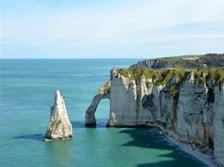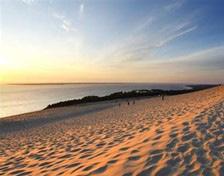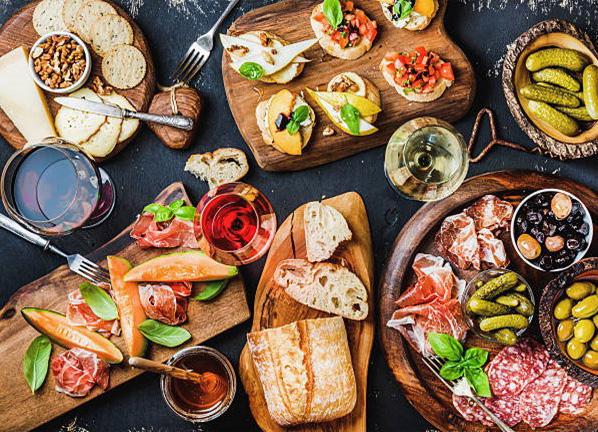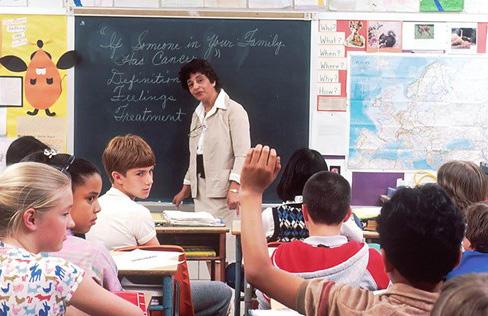
5 minute read
La France en 10 étapes
1. LA BISE
One of the most important things to know about France is that French people don’t just say ”hello” or shake hands, they do “la bise” with each other and it’s quite an art. Namely that France is full of subtleties in terms of social life, and it is sometimes difficult to identify as a foreigner. More than a tradition, it is a habit and even a reflex.
Advertisement
We sometimes forget its origins by thinking that this custom has been part of French culture for centuries but like everything else, codes and forms evolve. The kiss is first of all there to greet each other but it has variables depending on the person in front of us.
When you are in love, it goes without saying that you kiss on the mouth. When you’re not, what to do? We make poutous, kisses, beaks, kisses, becots, only terms to qualify “la bise”.
The French like to kiss each other! One, two, three or even four, we are indeed not stingy with “la bise” when it comes to greeting each other! 2. PHYSICAL CONTACT
To continue with the physical contact aspect, we are very friendly, warm and we are very demonstrative.
We tend to express ourselves by gesture and favor physical contact with peoples which is the opposite of Finland because they are more reserved and distant.
3. FRANCE TERRITORY
Did you know that the French territory lacks almost nothing: there are actually five different types of climate thanks to an impressive geological diversity, there are young and old mountain ranges, plains, volcanoes, rivers and streams, three different types of sea and ocean and 6 neighboring countries.
In addition, the French territory extends from all over the world with its islands such as Corsica and the overseas territories.
4. CUISINE FRANÇAISE



Then, in France, the meal is considered as an art of living and a ritual of happiness. Even though cooking trends can follow the influence of fashions, French cuisine has a strong influence on global gastronomy.
All occasions are good to have an aperitif, 80% of the French participate in this tradition regularly, most often on weekends. This moment marks the separation between moments of work and moments of relaxation, well-being, the perfect convivial moment. It is a moment of re-connection with colleagues, loved ones, family, an ideal time to communicate in a liberated way with others.

5. WHAT ABOUT SCHOOL
The goal in France is actually to have the best marks. The baccalauréat is 40% continuous assessment, which is stressful. We’re graded from 0 to 20. In Finland, from 0 to 5, the goal is just not to have 0.
Furthermore, days in France are quite long. From 8:00 to 17:00 more often. So we don’t have time to have entertainment.
Moreover, In Finland, Days are short, And school stops at 15:40 max.
Vacations in France are every 7 weeks, with 2 weeks break. Finnish pupils have more time in the week but less Vacations. There Is Also an important difference between the finnish school system and the French one.

6.RELATION TEACHER / STUDENT
In France, we have to address our teachers: it is a form of respect. We also have to raise our hands if we want to speak. We are not allowed to use our phone when we are in class and we must remain silent to listen to our teachers.
You have to wait for permission from the teacher to sit down or even leave class. We cannot eat or drink in class. Finally, we have knowledge checks very often. 7. CALLIGRAPHY
We write our lessons on notebooks or sheets (manually) compared to Finns who all write on computers. We have a different handwriting because we write in attachment.
8. STUDY ABROAD
With 90,000 students, so 1 in 3 students, going abroad over the period 2011-2016, France retains its sixth place in the world for ”outgoing mobility”. In five years, France has recorded ”a 50% increase” in the number of French people leaving to study abroad. Despite public aid, students from wealthy families are the ones who leave most easily.
In the top five of the favourite destinations for French students, Germany can boast of the prestige of its universities.Approximately 128,000 young French people between the ages of 10 and 18 go abroad each year on extracurricular language trips.
This figure rises to 400,000 if we add the educational school trips abroad organised by schools. And more than 14% of those taking a language trip are over 30 years old.
9. NATIONAL VALUES
The governmental values of France and Finland are the same (with Liberty, Equality and Fraternity) but the most important idea in France is Liberty unlike Finland which is mainly based on the principle of equality between all. Indeed, in France Freedom is the most important element, as soon as it is a question of endangering this value, the tension can quickly rise. There is also the principle of secularism, in most public institutions, religious symbols are prohibited.
10. LA GRÈVE
In France, there are many unannounced strike days. This is the case for teachers in secondary schools. They are not obliged to say whether they will come or not on a strike day.
This is very annoying for us.
Employees of a company can go on strike but it is not an obligation.
In any case, if a person goes on strike, he/she will not get his/her salary for that day.
The initial purpose of the strike is to show the dissatisfaction of the people with the salary or the living conditions (working hours by day) of each one.

Text Liv, Johan, Julie, Lilian, Clémentine, Emma, Lucy-Lou (koulullamme vierailleet ranskalaiset opiskelijat










